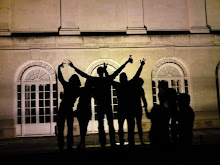For my fourth artefact, I rendered an image from the 3D model I produced for the Client Project. This had to show an improvement on the last artefact so I made a high quality single frame render of my redesign of the cocktail bar, ‘Minus One’. This image shows a well lit view across the bar including a realistic raised seating area.
I put the image into a questionnaire of the same structure alongside three photographs. Participants were asked to pick out the computer-generated image and to give any reasons for their choice.
The results showed that out of the people who participated, a modest fifty five percent of them correctly identified photo D as the computer-generated image. Most participants gave very limited comments when explaining their decision. However, a lot of people noted that it was a hard decision to make or that they were torn between two particular images. These findings show that there is an improvement in standard from the image used in the previous artefact. A much larger group of people were fooled by this questionnaire, which shows that a fairly decent standard of reality can be created on an inferior machine. Even though the percentage is only just a majority, the results are encouraging.




